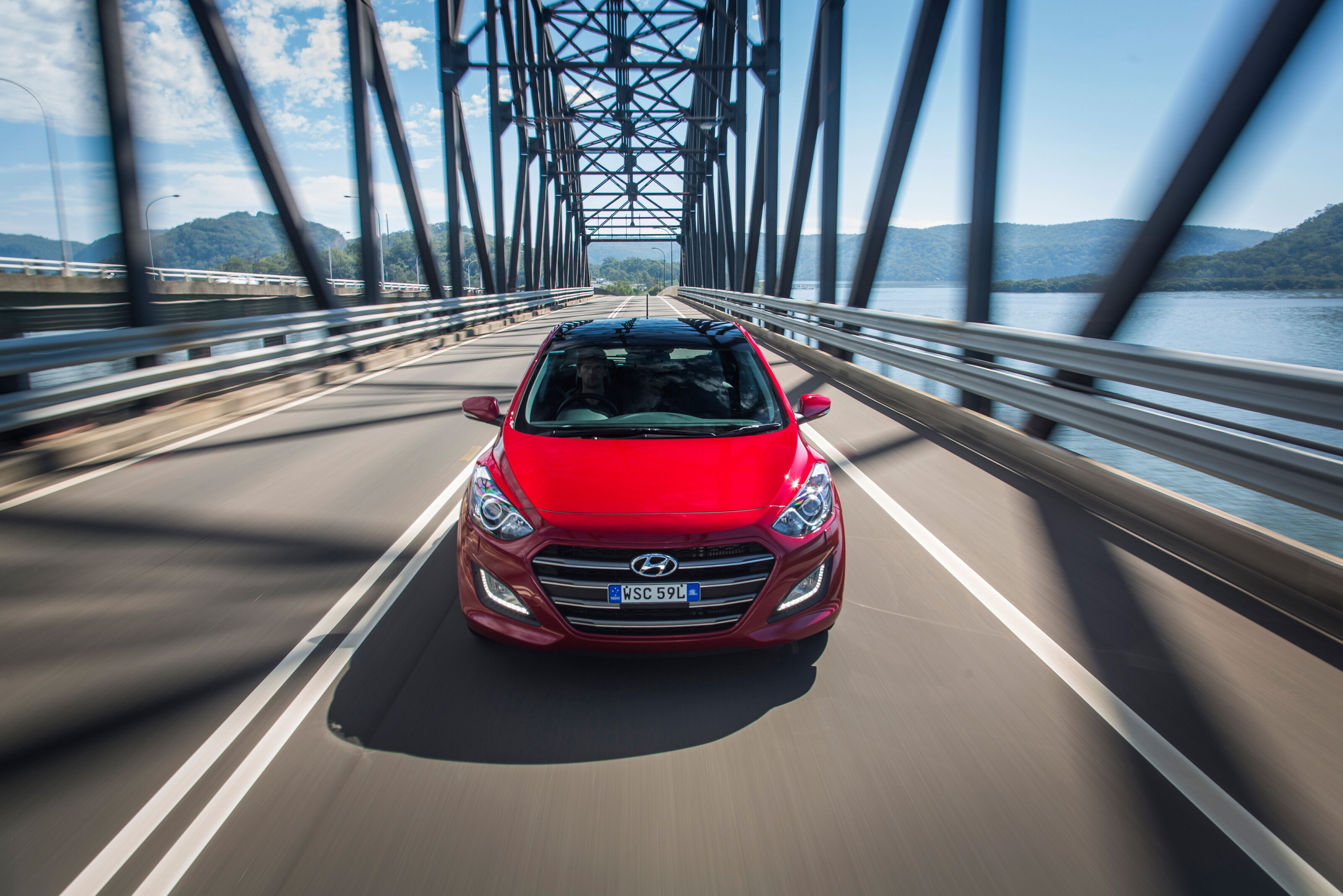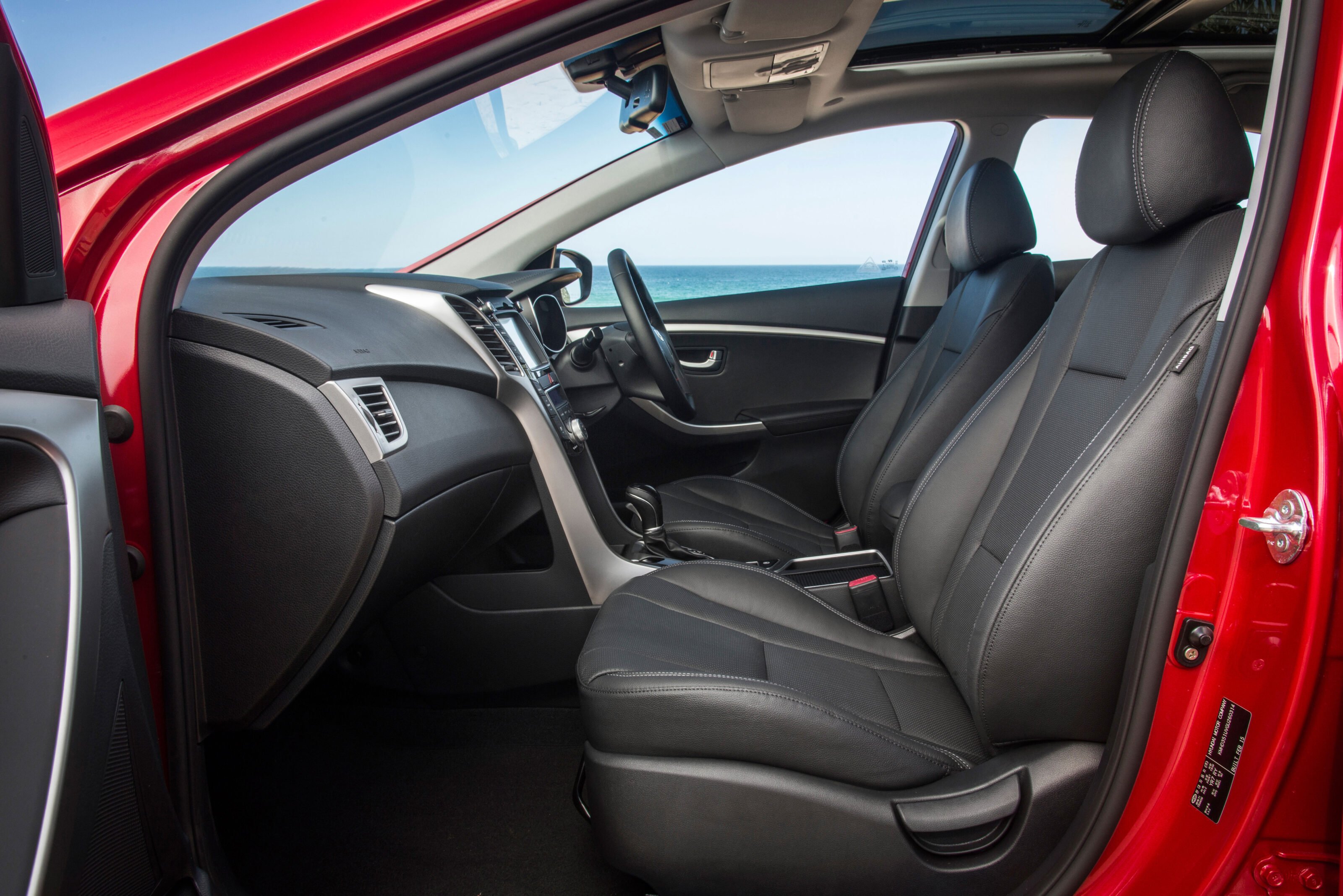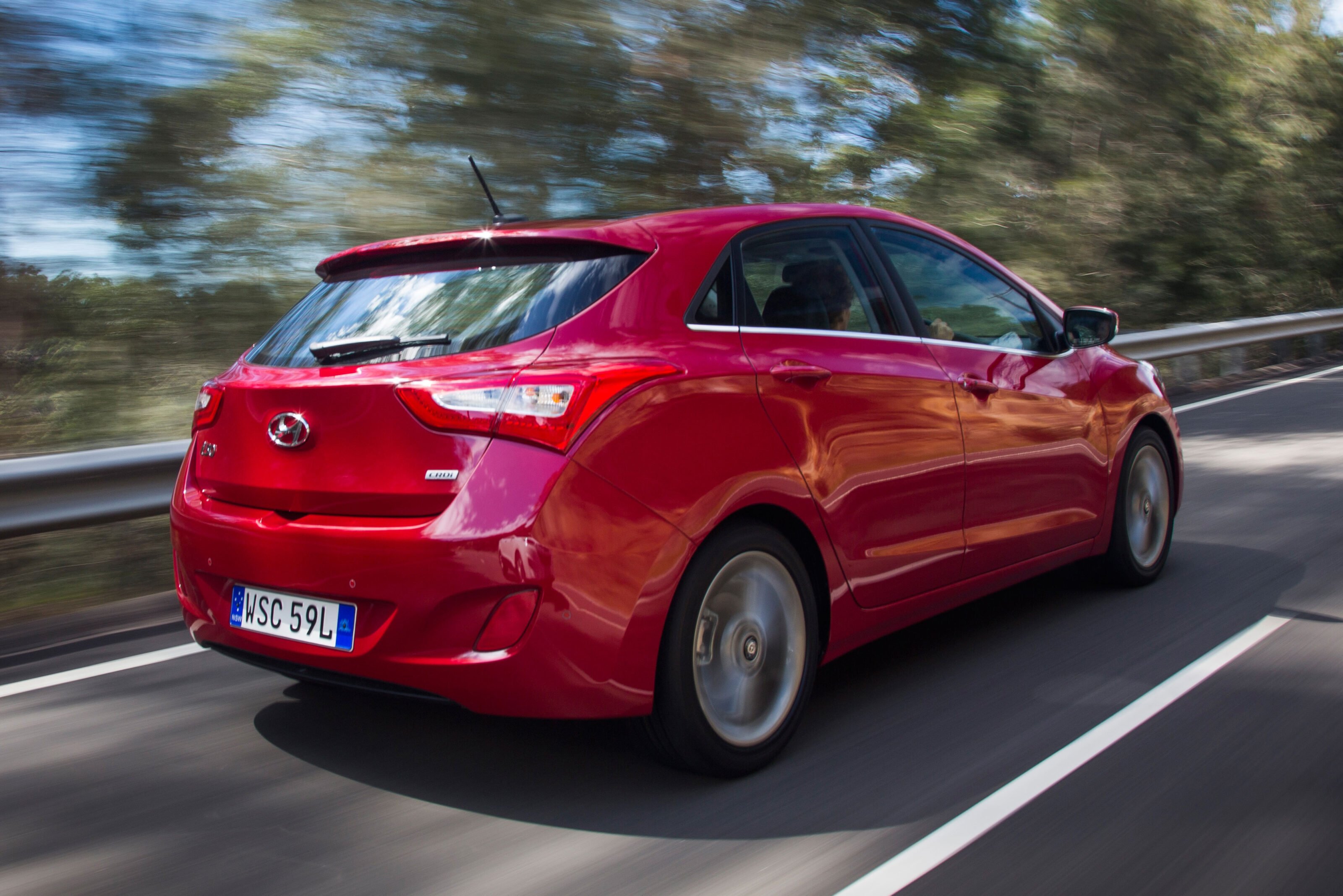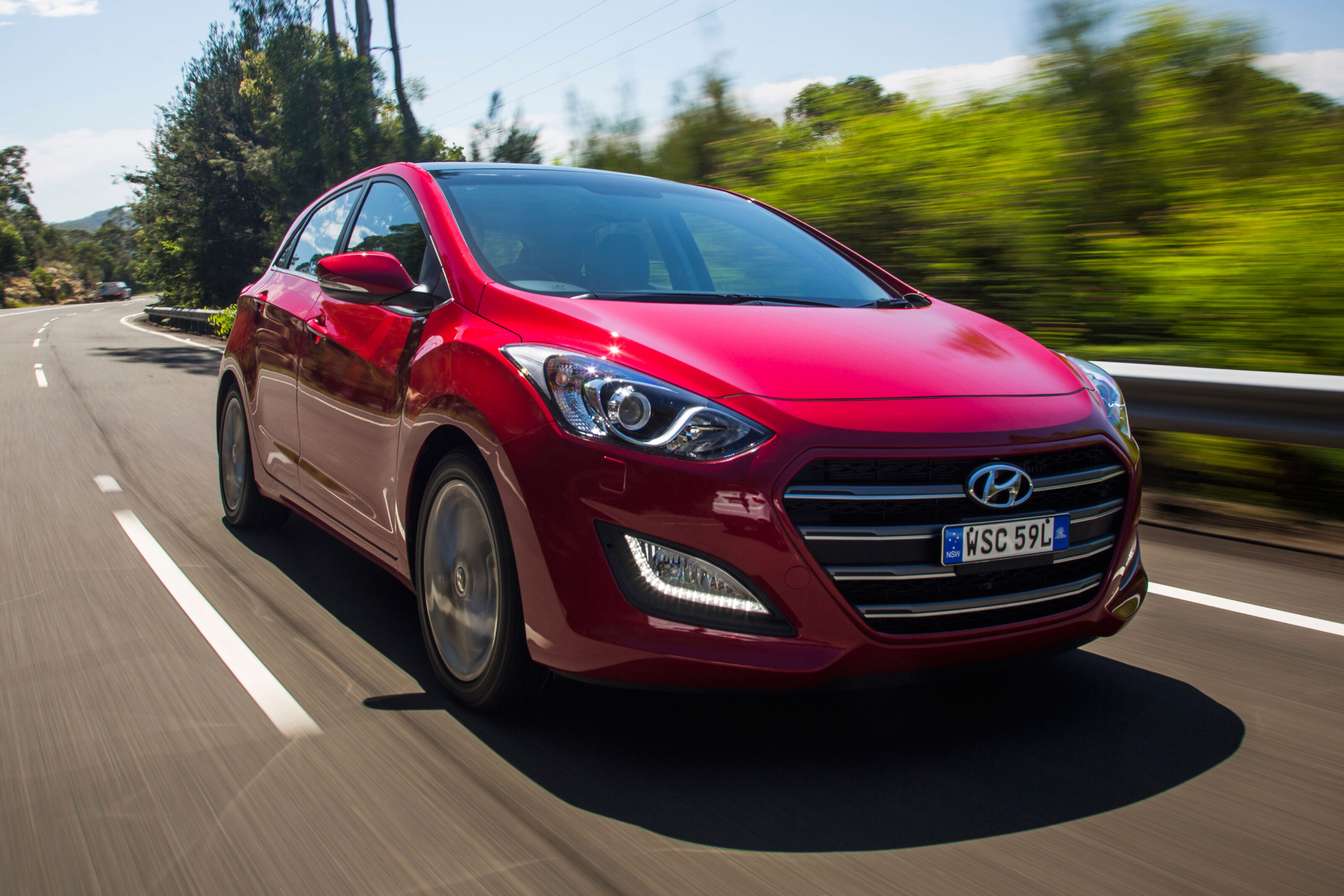THE three-year-old Hyundai i30 C-segment hatch (and Touring wagon) is subtly modified with a more elegant nose, improved diesel efficiency and performance (courtesy of a new dual-clutch auto), and minor spec improvements.
WHAT IS IT Hyundai’s best-seller, the second-gen i30, is now in midlife crisis mode, undergoing a (successful) facelift, gaining a torquier diesel with a DCT dual-clutch auto, a reverse camera and updated multimedia. However, the volume-selling 1.8 petrol screamer remains untouched, sadly, and what of the dynamic and refinement issues?
WHY WE’RE TESTING IT Hyundai really needs the i30 to keep firing, but that’s becoming tough in the face of the marketing muscle-backed Toyota Corolla, redesigned Mazda 3, high-flying Volkswagen Golf and upcoming facelifted Ford Focus. The goalposts keep shifting, so we need to know if the i30 is keeping pace.
MAIN RIVALS Toyota Corolla, Ford Focus, Mazda 3, Nissan Pulsar, Kia Cerato, Honda Civic, VW Golf, Skoda Octavia, Mitsubishi Lancer, Holden Cruze, Peugeot 308

THE WHEELS VERDICT Hyundai is clearly treading water with its bestselling model, and we wonder whether that is a smart move when the Volkswagen Golf, Mazda 3 and Ford Focus are standing in its path. Still, the i30 is probably preferable to the Toyota Corolla, Nissan Pulsar and Mitsubishi Lancer.
PLUS: Appealing design; great cabin; generous warranty; driving ease MINUS: Dynamics remain unresolved; firm ride; noise intrusion; ageing 1.8-litre twin-cam petrol four-cylinder engine lacks sparkle
THE WHEELS REVIEW IT IS a convenient coincidence that the i30 is in the C segment, because that letter also defines the South Korean hatchback’s middle-of-the-road standing.
The face of the GD Series II range loses its odd braces for a more elegant, Genesis-style hexagonal grille treatment. Redesigned alloys, updated multimedia, standard reversing camera and minor spec improvements further help the still handsome i30 in its time of midlife-makeover need.

Not much was wrong with the spacious, solid and smart cabin, defined by thoughtful control placement, perfectly clear dials, ample ventilation, a laughable amount of storage, supportive seating and a flawless driving position. Sure, the leather feels like pleather, it’s all a bit of a button-fest, and rear vision is hindered by the upswept window line, but the quality and ambience places the Hyundai somewhere between Japan and Germany. For showroom allure, the i30’s a knockout.
Too bad the ride quality can be pummelling over bad roads, at least in the Elite-usurping Active X. Wearing vocal Hankook Kinergy Eco 205/55R16 rubber, we don’t know what is more wearisome – the fidgety suspension or incessant droning that both compromise refinement. Furthermore, comfort drops to a D-minus in the flagship Premium CRDi on Nexen 225/45R17s.
Keen drivers won’t much like the electric power steering set-up when roads get interesting, despite Hyundai’s local tuning efforts. Well planted if muted at the straight-ahead, the helm feels artificial and imprecise as speeds and turns pile on for a dissatisfying, disconnected experience. Moreover, electing Sport rather than the ridiculously wispy Comfort or overly light Normal modes only taxes the arm muscles.

Likewise, a similar malaise infects the unchanged 107kW/175Nm 1.8-litre four-cylinder petrol engine’s performance. Lusty at low revs but lacking low-down torque, a call for more power will have the engine roaring raucously beyond 5000rpm all too regularly, further undermining refinement. The gutsier (and now $2500 cheaper) SR’s 124kW/201Nm 2.0 serves as a more appealing option to the thrashy 1.8 auto, but none were available at launch.
Relief is available via the stronger 110kW/300Nm 1.6 CRDi turbo-diesel, its newly minted seven-speed DCT dual-clutch auto meaning the self-shifting i30 gains a handy 40Nm advantage over the continuing six-speed manual version for effortless mid-range performance. But off-the-line lethargy remains an issue. At least fuel use averages fall below 5.0L/100km. Hyundai should also be commended for pricing its diesels from just $23,590.
With leading warranty/aftersales underpinning its good looks inside and out, the improved i30 from $20,990 remains on top of the averages. However, against A-grade stars like the Golf, this Hyundai is still a C proposition.
SPECS Model: Hyundai i30 Active X Engine: 1797cc 4cyl, dohc, 16v Max power: 107kW @ 6500rpm Max torque: 175Nm @ 4700rpm Transmission: 6-speed auto Weight: 1270kg 0-100km/h: N/A Fuel economy: 7.3L/100km Price: $24,390 On sale: NowClick here to read the full range review on the Hyundai i30.





